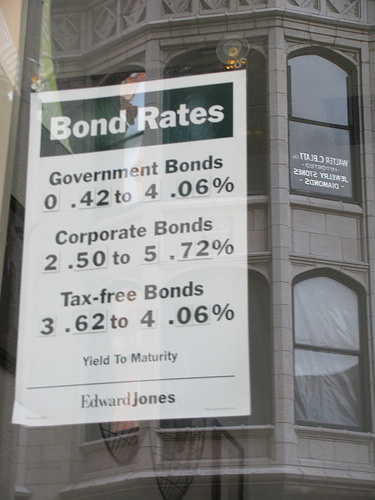Often governments and corporations need to raise capital for a multitude of reasons. To do this they have several channels available. They can borrow from banks, issue stock or borrow from investors or they can issue debt securities in the form of bonds.
Many investors (called bond holders) purchase these bonds and in return, the company gets a lump sum amount of capital. The company then pays interest to the investors and returns the principal amount invested (called the face value) upon maturity of the bonds (called the call date).
Companies Have Credit Ratings Too

These companies may also issue more exotic types of High Yield Bonds such as:
- Split-coupon bonds: Offer one interest (coupon) amount to the investor within a few years of purchasing of the bond. The second interest amount is given in the later years. Step-up notes are those Split-coupon issues in which the interest rate increases in the later years.
- Pay-in-Kind bonds: The investor is paid interest in the form of additional securities.
- Floating-rate and Increasing-rate notes (IRNs): The bond holder is paid varying or adjusted rates of interest. This is based on a schedule of payments or on a benchmark of interest rates.
- Extendable Reset Notes: In this type, the issuer can reset the coupon rate and extend the maturity date of the bond periodically or during some specified events. For the same, the holder of the bond can either sell the bond or “put” it back to the issuer.
- Deferred Interest Bonds: Here the bond holder doesn’t receive interest until a future date.
- Zero Coupon Bonds: Also referred to as “Zeros”, they can be purchased by the bond-holder at a highly discounted amount to their face value. Interest is accrued during the life of the bond and only paid at maturity when the bond reaches face value.
- Convertible Bonds: Under specified circumstances, these bonds can be converted into shares of the common stocks of the issuer.
- Multi-tranche Bonds: Here, the bonds are divided into a number of investment tiers within a single issue. These tiers, differ in their credit quality and pre-specified maturity dates. Thus the investor can choose his risk level and return. This was popular with bundled mortgage backed securites allowing investors to choose
As High Yield Bond issuers have a lower credit rating, there is always a higher risk associated with purchasing them. The bond prices may fall during recession or if the issuer’s credit rating is lowered further. If interest rates rise, the price of the bond may deteriorate. But if interest rates decrease, the bond – yields may be high and this will boost up the investor’s income. In the event that the issuer company gets liquidated, bond holders have a higher priority than stock holders and may receive payment or only partial payment after liquidation which may mean a substantial delay.
Photo Credits: by Digital Sextant
See Also:
